The United States stamp Scott #1 marked a pivotal moment in the history of the United States postal system. Officially issued on July 1, 1847, this stamp emerged as a response to the evolving needs of a growing nation and its communication infrastructure.
Design & Print
The printer responsible for Scott #1 was Rawdon, Wright, Hatch, and Edson of New York City, a firm renowned for its expertise in banknote printing. This selection of a banknote printer was strategic, aimed at reducing the risk of counterfeiting, a common problem of the era.
The design of the stamp featured a portrait of Benjamin Franklin, the first Postmaster General of the United States, a choice that underscored the stamp’s significance and paid homage to Franklin’s foundational role in establishing the country’s postal system.
Records suggest that approximately 3.7 million copies were printed, a number reflecting the postal demands of the time. The introduction of this adhesive postage stamp was a major advancement from the previous system, where postal charges were often paid by recipients upon delivery.
Postal Usage
Historically, the production of Scott #1 coincided with a period of rapid expansion and change in the United States. The mid-19th century was a time of growing communication needs, driven by factors such as westward expansion and increased commercial activity. The stamp played a crucial role in streamlining postal operations and making mail service more accessible to the American public.
In terms of postal usage and rates, Scott #1 carried a denomination of five cents. This rate was applicable for letters traveling up to 300 miles. The establishment of a uniform postal rate, payable in advance, was a significant shift from the varying and often unpredictable charges that characterized the postal system before the introduction of standardized stamps.
Identification
The stamp is imperforate, meaning it lacks the perforations commonly found on later issues. Its color is described as red brown, however there are other shade types in existence that can significantly impact its value. Additionally, the stamp features a square frame with a full-length portrait of Franklin, surrounded by the words “U.S. Postage” and “Five Cents.”
Scott #1 vs Scott #3
Distinguishing a Scott #1 from the reproduction issued in 1875 (Scott #3) can be made by examining the slight differences in the design. Although the designs look the same at first glance, these distinctions become easily recognized to the trained eye.
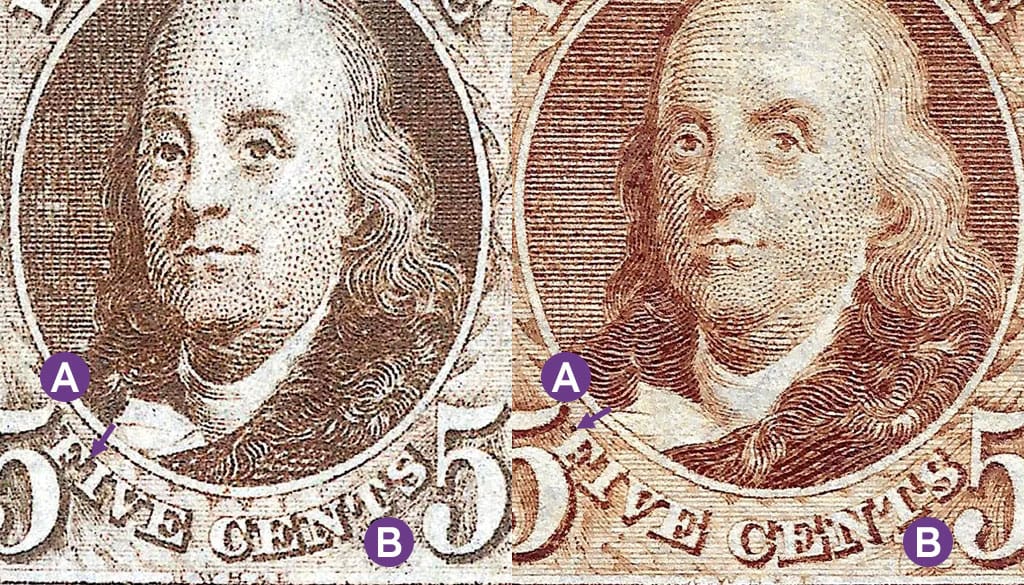
A. On Scott #1 the tip of the white frill of Franklin’s neck tie points to the right side of the “F” in “FIVE CENTS”, whereas it points to the left side of the “F” on Scott #3.
B. The bottom of the “N” in “CENTS” is blunt on Scott #1, whereas it comes to a sharp point on Scott #3.
The introduction of Scott #1 was not just a technological advancement but also a cultural shift in how Americans communicated. It laid the groundwork for a more efficient and reliable postal system, an essential component in the nation’s growth and development.

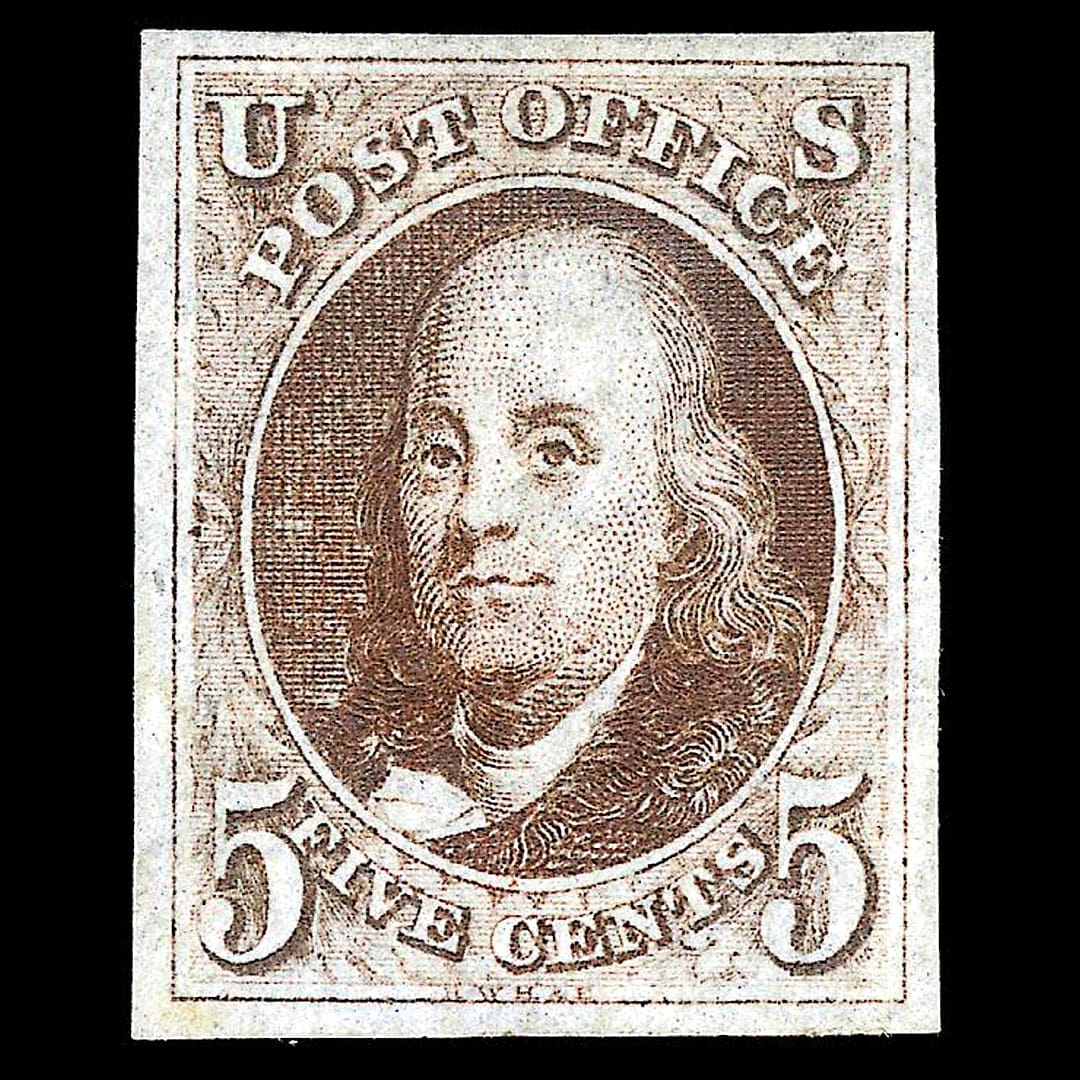


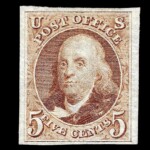

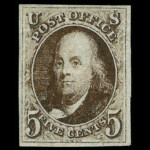
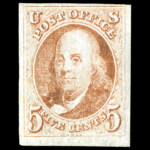
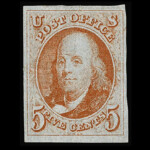

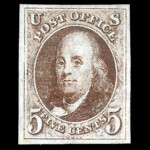
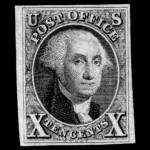








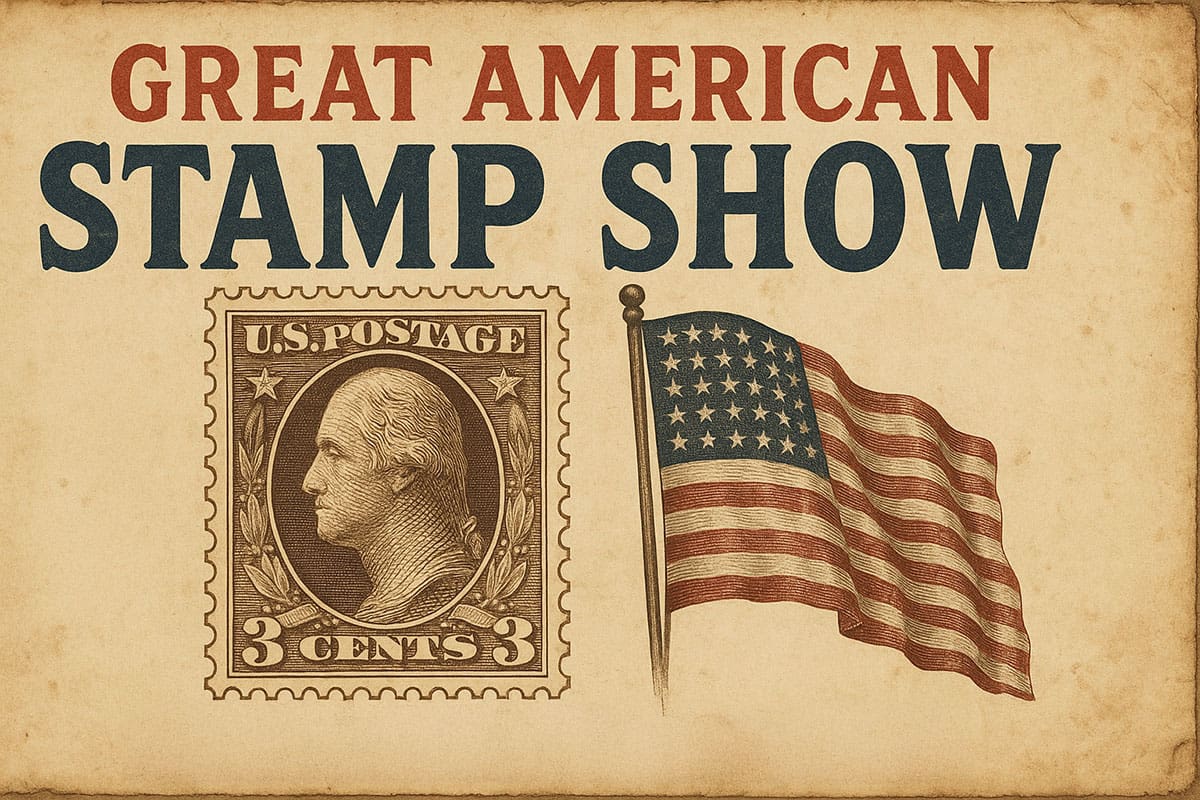



Ask A Question Or Leave A Comment